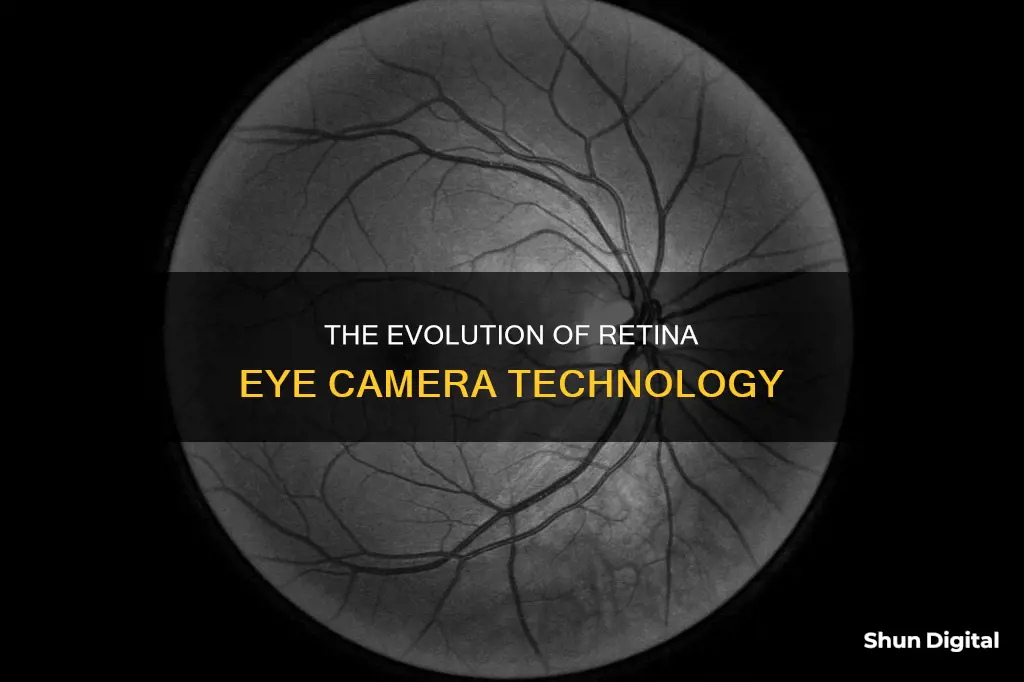
Retinal cameras are medical devices used to take images of the back of the eye, including the retina, optic disc, and blood vessels. These images are used to detect diseases such as diabetic retinopathy, macular degeneration, and glaucoma, and can be captured using tabletop or handheld cameras.
The development of retinal imaging technology can be traced back to the late 19th and early 20th centuries, when there was a widespread belief that the eye recorded the last image before death. This concept, known as optography, inspired police investigators at the time to photograph victims' eyes in murder cases. However, the theory was repeatedly debunked as a forensic method.
Over time, retinal imaging technology has evolved from traditional fundus photography to more advanced techniques such as confocal scanning laser ophthalmoscopy, optical coherence tomography, and polarization-sensitive retinal scanning. These modern technologies use light to reveal structural and functional information from the retina in a non-destructive and non-invasive manner, providing invaluable insights for ophthalmologists and doctors.
Today, retinal cameras are widely used in eye care practices and have become an essential tool for early detection and diagnosis of various eye conditions.
| Characteristics | Values |
|---|---|
| What | A retinal camera takes a digital picture of the back of the eye. |
| History | The belief that the eye "recorded" the last image seen before death was widespread in the late 19th and early 20th centuries. In 1880, German physiologist Wilhelm Kühne demonstrated this by extracting the eyes of a murder victim and observing an image on the retina. |
| Types | There are two common types of retinal cameras: tabletop and handheld. |
| Use | Retinal imaging helps doctors find certain diseases and check eye health. |
What You'll Learn

The history of retinal imaging
One of the earliest attempts at retinal imaging was made possible by the invention of fundus photography in the 1920s. This technique was first used as a standard photographic method based on 35mm film and later evolved into digital photography. Fundus photography allowed for the examination of fine details within the eye, such as the optic nerve, that were not easily visible during a standard eye examination.
As technology advanced, new methods of retinal imaging emerged. One notable development was the invention of the ophthalmoscope, a tool used by doctors to examine the back of the eye. While this provided valuable insights, it had limitations in terms of field of view and image quality. To address these limitations, tabletop and handheld retinal cameras were introduced. These cameras offered higher image quality, portability, and accessibility, making retinal imaging more widely available to both patients and healthcare providers.
With the introduction of scanning laser ophthalmoscopy, retinal imaging took a significant leap forward. This technique used a narrow laser beam to scan the retina, resulting in improved patient comfort and image quality. The development of confocal scanning laser ophthalmoscopy further enhanced the depth resolution and contrast of retinal images.
Adaptive optics scanning laser ophthalmoscopy (AOSLO) took retinal imaging to a new level by integrating adaptive optics to reduce wavefront distortions. This technology improved image quality and enabled the visualization of microscopic retinal structures. Polarization-sensitive optical coherence tomography (PS OCT) was also introduced, providing additional functional information by detecting changes in the polarization state of light reflected from the retina.
Today, retinal imaging has become an essential tool in ophthalmology, allowing for the early detection and monitoring of various eye conditions, such as diabetic retinopathy, macular edema, and glaucoma. The continuous advancements in retinal imaging technology have revolutionized eye care and improved the diagnosis and management of eye diseases.
Lithium-Ion Batteries: Powering Your Camera
You may want to see also

The advantages of tabletop cameras
The advantages of tabletop tripods are numerous, especially for photographers who are travelling with limited space and weight restrictions. Here are some of the key benefits:
- Stability and support: Tabletop tripods provide stability and support for cameras, preventing blurry photos and ensuring clear, sharp images. This is especially useful when shooting in low-light conditions or using longer exposure times.
- Portability: They are compact, lightweight, and easy to carry, making them ideal for travel and fitting into small camera bags. Some can even fit into your pocket!
- Versatility: These tripods are highly versatile and can be used with a range of camera types, from DSLRs to compact cameras, action cameras, and smartphones. They can also be used in various shooting scenarios, whether on a tabletop, attached to objects, or even handheld as a grip or selfie stick.
- Adjustability: Many tabletop tripods feature adjustable legs, ball heads, and pan and tilt functions, allowing for precise angle and position adjustments to get the perfect shot.
- Affordability: Tabletop tripods tend to be more affordable than full-sized tripods, making them a cost-effective option for photographers on a budget.
- Specialised uses: Some tabletop tripods are designed for specific purposes, such as macro photography or providing a stable platform for flashes.
- Accessory support: Certain models come with accessory arms or attachments, allowing photographers to mount additional equipment like lights, microphones, or external monitors.
Overall, tabletop tripods offer a range of advantages that make them a valuable tool for photographers, especially those who need a portable, versatile, and affordable camera support system.
Point-and-Shoot Cameras: Do They All Have Macro Mode?
You may want to see also

The benefits of handheld cameras
The Kodak Retina was a brand-name of a long-running series of German-built Kodak 35mm cameras, produced from 1934 until 1969. The benefits of handheld cameras, such as the Retina, are numerous.
Firstly, handheld cameras offer cinematographers and filmmakers greater freedom and flexibility compared to traditional fixed camera setups. By being untethered from a tripod or dolly, handheld cameras can easily be manoeuvred into different positions, angles, and locations, allowing for more dynamic and creative shots. This mobility is particularly advantageous in capturing chaotic or action-packed scenes, as the camera can move with the action, heightening the intensity and immersiveness of the scene for viewers.
Secondly, handheld cameras can foster a greater sense of intimacy between the audience and the characters on screen. The natural camera shake and slight imperfections that come with handheld footage can make the viewing experience more authentic and immersive, blurring the line between the audience and the story. This effect is especially desirable in intimate or emotional scenes, where the subtle movements of the camera can mirror the emotions of the characters, drawing viewers into the narrative and enhancing their connection to the characters.
Additionally, handheld cameras offer logistical benefits. They are generally smaller and more lightweight than their fixed counterparts, making them easier to transport and set up, especially in tight or hard-to-reach spaces. This portability is advantageous for filmmakers working with limited budgets or crews, as it allows them to capture high-quality footage without the need for extensive equipment or production value.
Finally, handheld cameras have played a significant role in the evolution of cinema, offering filmmakers an artistic tool to tell their stories in unique and expressive ways. Filmmakers like Jean-Luc Godard, who utilised handheld shots in his iconic film "Breathless," have demonstrated the creative potential of handheld cameras, influencing generations of filmmakers to embrace this technique and push the boundaries of cinematic storytelling.
In conclusion, handheld cameras offer a range of benefits, including increased mobility, heightened intensity, greater intimacy, logistical advantages, and artistic expression. These benefits have contributed to the widespread adoption of handheld cameras in modern filmmaking, shaping the way stories are told and allowing viewers to experience films in new and immersive ways.
Clip Studio's Camera Raw Mode: Pros and Cons
You may want to see also

The impact of retinal scanning technologies
Retinal scanning technologies have had a profound impact on various sectors, including healthcare, security, and forensics. In the healthcare sector, retinal imaging has become an invaluable tool for eye doctors, enabling them to detect eye diseases earlier and more accurately. It allows doctors to examine the retina, optic disc, and blood vessels, aiding in the diagnosis and monitoring of conditions such as diabetes, macular degeneration, glaucoma, and retinal toxicity. Retinal scanning also has medical applications beyond ophthalmology, as it can detect signs of other diseases that affect the eyes, such as AIDS, syphilis, malaria, and certain hereditary diseases.
In the field of security and authentication, retinal scanning has emerged as a highly secure and reliable biometric modality. Due to the unique pattern of blood vessels in each person's retina, retinal scans are extremely difficult to spoof, making them ideal for top-level security applications. Government agencies, such as the FBI, CIA, and NASA, have adopted retinal scanning for authentication and identification. Additionally, retinal scanning has been explored for criminal investigations, with attempts to use optography, or the retrieval of images from the retina, in forensics. However, this concept has been largely debunked, and modern scientific research has concluded that optography is not a viable forensic tool.
Despite the advantages of retinal scanning, there are also some drawbacks and limitations. One of the main concerns is the public perception of the technology as invasive and uncomfortable due to the proximity of the eye to the scanning device. Additionally, retinal scanning may be affected by certain eye conditions, such as cataracts and severe astigmatism, which can impact the accuracy of the measurements. Nevertheless, retinal scanning continues to evolve and find new applications, contributing significantly to the fields of healthcare and security.
Charging the Eufy 2C: A Quick Guide to Powering Up
You may want to see also

The future of retinal imaging
Retinal imaging has come a long way since the early days of ophthalmoscopes, which doctors used to view the back of the eye. Today, retinal imaging uses advanced technologies such as optical coherence tomography (OCT) and adaptive optics scanning laser ophthalmoscopy to capture detailed images of the retina and choroid. These technologies have improved our understanding of ocular and systemic diseases and have become an essential component of retina clinics.
So, what does the future hold for retinal imaging? Here are some key areas of focus:
Improved Resolution and Speed
One key area of development is improving the resolution and speed of retinal imaging. Advances in OCT technology have already increased the resolution from 10 microns to 3-4 microns, and efforts are being made to further enhance this. Additionally, faster imaging speeds will reduce motion artifacts, leading to clearer images.
Non-Invasiveness and Comfort
There is a continued emphasis on making retinal imaging procedures non-invasive and more comfortable for patients. This includes eliminating the need for dilation and reducing the sensitivity to light post-examination.
Metabolic Activity and Functional Status of the Retina
Retinal imaging technologies are being developed to provide insights into the metabolic activity and functional status of the retina at the cellular level. This includes assessing the metabolic status of the retina and understanding its relationship with various pathologies.
Wide-Field Imaging and Peripheral View
Imaging the peripheral retina is crucial for managing various retinal diseases, especially in pediatric patients. Wide-field imaging systems, such as the Optos camera, can capture images of the peripheral retina up to 200 degrees without the need for a contact lens or pupillary dilation. Further advancements in this area will enhance our ability to diagnose and manage retinal diseases early on.
Artificial Intelligence and Data Analysis
Artificial intelligence (AI) has the potential to revolutionize retinal imaging by automating the detection and analysis of retinal pathologies. AI algorithms can be trained to identify signs of diseases such as age-related macular degeneration and diabetic retinopathy, improving the accuracy and efficiency of diagnosis.
Multimodal Imaging and Integration
Combining multiple imaging modalities, such as optical coherence tomography, scanning laser ophthalmoscopy, fluorescein angiography, and photoacoustic ophthalmoscopy, into a single platform can provide a more comprehensive view of retinal health. This integrated approach can lead to earlier and more accurate detection of retinal abnormalities and a better understanding of the structure-function relationship of the retina.
In conclusion, the future of retinal imaging holds great promise for improved diagnosis and management of ocular and systemic diseases. With ongoing advancements in technology, we can expect retinal imaging to become even more precise, non-invasive, and accessible, ultimately enhancing patient care and outcomes.
The Evolution of Disposable Cameras: Still Relevant Today?
You may want to see also
Frequently asked questions
A retina eye camera is a device used to take a digital picture of the back of your eye. It shows the retina, optic disc, and blood vessels. This helps eye doctors find certain diseases and check the health of your eyes.
There are two common types of retina eye cameras: tabletop cameras and handheld cameras. Tabletop cameras are placed on top of a medical instrument table and are more expensive, but they allow operators to take higher-quality images more consistently. Handheld cameras, on the other hand, are smaller, more portable, and battery-operated. They are best suited for customers who need to be more mobile with their camera, such as those performing fundus photography in patient homes.
Retina eye cameras allow eye doctors to see signs of eye diseases that they couldn't see before. The test is painless, and the results are easy for doctors to interpret. The images can also be stored on a computer and compared with other scans. Additionally, retina eye cameras have made early detection of eye diseases more accessible and affordable for both patients and providers.







